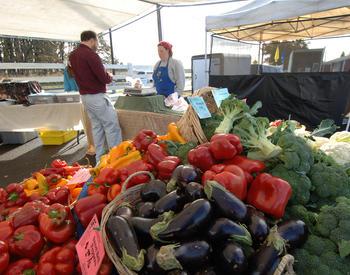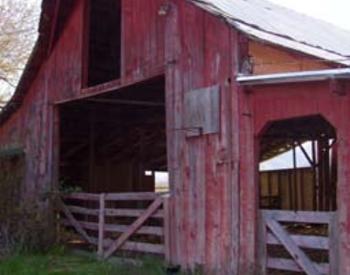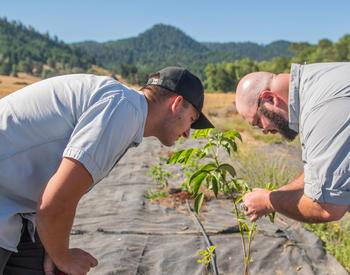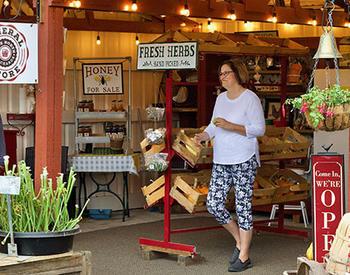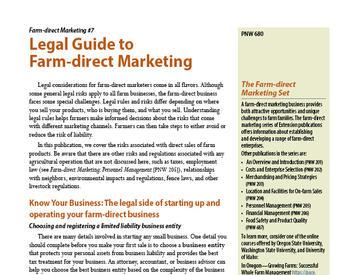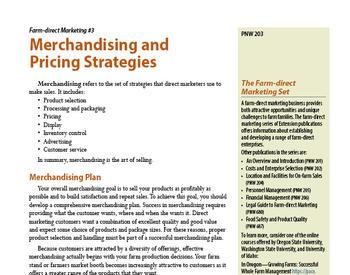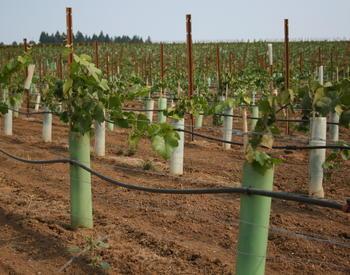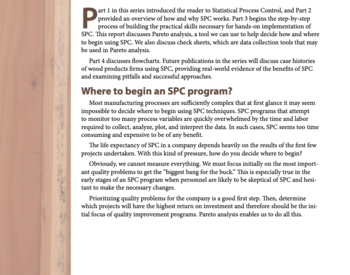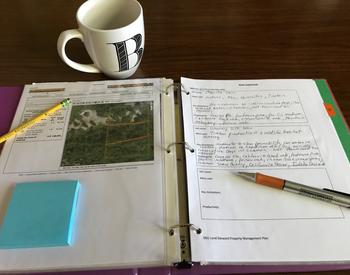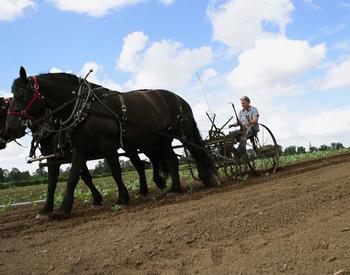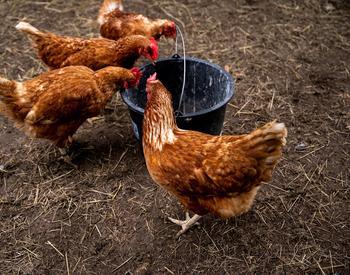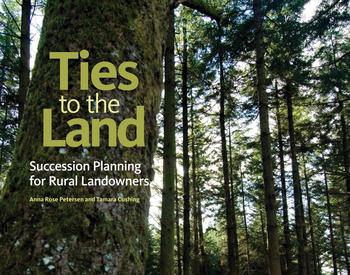If livestock producers in Oregon wish to sell meat, they must have their livestock slaughtered and processed at a U.S. Department of Agriculture-inspected facility. Some producers have chosen to sell live animals, which the customers, as the new owners, can then have processed at a “custom-exempt,” state-licensed facility. For example, Farmer Smith sells one live steer to four people, each of whom gets a one-fourth share of the meat from that steer. This practice is not only cost-effective for both farmer and customer but also entirely legal if some simple rules are followed.
This guide explains the federal and state rules that apply to farmers and customers.
What does “custom-exempt” mean for slaughter or processing?
A “custom-exempt” plant, exempt from continuous inspection, can only slaughter and process livestock for the exclusive use of the owners, the owner’s family, and nonpaying guests. Packages of custom-processed meat and poultry must be labeled “NOT FOR SALE” (and cannot be labeled with “natural,” “humane,” or other claims). The “NOT FOR SALE” label is required because, by law, the meat cannot be sold, traded, bartered or given away, such as to a food bank. Custom-exempt operations are typically thought to process game meat for hunters, but they usually offer processing services to anyone who wants an animal slaughtered or processed for personal use.
Slaughter and processing businesses that operate under this exemption are inspected by both the Oregon Department of Agriculture and the USDA once or twice a year. (This is not the same as daily or continuous inspection for USDA-inspected processors.) Custom-exempt slaughter and processing (also called “cut and wrap”) plants are expected to meet the same requirements for sanitation and construction that USDA-inspected plants must meet, along with keeping certain records.
What are the relevant state and federal laws?
Custom-exempt slaughter and processing establishments are described in Oregon’s Revised Statutes (ORS) in Chapters 603, Meat Sellers and Slaughterers, and 619, Labelling and Inspections of Meat Products.
Buildings, controls, construction, packaging, sanitation, labeling, and other requirements for both types of business are described in Oregon’s Administrative Rules: Chapter 603, Divisions 13, Slaughtering Establishments, 25, Food Establishment Standards and Standards for Retail Food Service Activities, and 28, Meat Products and Establishments.
The Federal Meat Inspection Act gives USDA's Food Safety Inspection Service jurisdiction over meat and poultry slaughter and processing. The 27 state-level meat and poultry inspection programs operate at the discretion of and are regularly reviewed by food safety inspection service. Oregon does not have such a program. Federally inspected products can be shipped over state lines and internationally to many countries. Federal inspection requires a Hazard Analysis and Critical Control Point Plan, Sanitary Standard Operating Procedures, daily inspection of processing facilities, and if the plant slaughters livestock, ante-mortem and post-mortem inspection of every animal.
Can I sell 1/8th or even 1/16th of an animal, or only 1/2?
USDA does not have a specific rule about how many shares you may sell in any one animal. Some states restrict shares to four or eight per animal, but Oregon does not have such a restriction. The carcass must be labeled by the fixed or mobile slaughter facility with each owner’s name.
However, if you sell more than four shares per animal, you and your processor are very likely to come under additional scrutiny from both USDA and ODA. This is because it will appear that you are crossing the line and selling uninspected meat, rather than live animals, in violation of the federal Meat Inspection Act. Remember: meat processed at a custom-exempt facility cannot be sold, only returned to the owner. The custom-exemption was originally designed for livestock producers to get their own livestock processed for their own home use. Stretching the exemption too far may cause it to be revoked.
In addition, keep in mind that the more shares you sell in each animal, the more work you are creating for your processor, who must speak with each shareowner about scheduling, cutting orders, pick up, and payment. The processor will earn the same revenue on one animal whether it is sold to two, four, or eight people.
Can I charge by the pound?
You are legally selling the animal when living; by the letter of the law, you should charge by live weight. However, it is generally recognized that this is often not practical, so you may charge by hanging weight (the weight taken after slaughter with hide, organs, head, and feet removed). You may not charge by final product weight (cut and wrapped).
For example, you sell a steer in four shares to four people. The whole carcass is 680 pounds hanging weight. One-fourth of that equals 170 pounds. Your price per pound is $5. Each person pays you $5 × 170 = $850.
Can I advertise my beef shares when I’m selling other legal/licensed items such as eggs and vegetables at the farmers market or on my website?
Yes. However, you must be careful about the language you use in your advertising. “Beef shares available, $X/lb” is acceptable, but “250 lbs of beef for sale, $X/lb” is not. These may seem quite similar, but to regulatory authorities, they are not. The first is advertising shares of a beef animal. The second is advertising meat. Because you are not using a USDA-inspected processing facility, you cannot sell meat, only the animal.
Can I get the animal slaughtered before I sell all the shares?
No. You must sell all the shares in the animal prior to slaughter. You are selling a live animal. If you sell a share after the animal is slaughtered, then you will be selling meat, which is not allowed if you are using a custom-exempt facility.
Once I sell an animal, does the new owner have to take it to the slaughter facility?
No. If you are using a fixed slaughter facility, you may transport the animal there. If you are using a mobile slaughter service, that person can slaughter the animal on your farm and then deliver it to the cut-and-wrap facility. Alternatively, the new owner can transport the animal to the slaughter facility.
How do I document that the carcass was sold while the animal was still alive?
You must provide the name of each buyer to the slaughterer and cut-and-wrap facility. The slaughterer will label the carcass with the names. All parts of the carcass and its byproducts must be identified with the owners’ names at all times. When ODA inspects a custom-exempt facility,inspectors will look for these names. You do not need to provide separate certificates of ownership, though it is always a good idea to keep receipts for these transactions.
Who places the cutting order with the cut-and-wrap facility?
The shareowners should call the cut-and-wrap facility directly to arrange cutting instructions (e.g., thickness of steaks, size of ground or stew meat packages, certain cut choices) as well as specify which carcass parts (e.g., liver, dog bones, heart, tongue) they want returned to them. When a group of individuals “cowpools” to purchase one animal together, and all individuals agree on cutting instructions, only one of them needs to call the processor to give these instructions. After the sale of the animal, there is no reason for the processor to contact the previous owner.
Can my customers pay me for processing?
No. Your customers pay you for shares of live animals. As the new owners of the animal, they must pay the processor directly for the service of slaughter and processing. Typically, they will do this when they pick up their meat from the processor.
Can I deliver frozen meat to my customers or do they have to pick up at the processing plant?
You may provide delivery as a free service to your customers. You may not charge a fee for delivery. And remember, you cannot be involved with payment for processing. That is a transaction between the customer and the processor. Your county may have additional regulations about transporting meat; check with your county health department.
Can I sell a share of beef for a nominal charge such as $25 and then charge a price per pound of meat on top of that?
No. You can only charge a price per pound based on hanging weight.
Can two customers share a beef quarter together, with one having the steaks and roasts, and the other taking the ground beef and economy cuts only?
Yes. As the two owners of the meat, they can share it with each other however they like.
Can I make my own bacon and sausage and sell that?
No. You may only sell bacon and sausage if you start with USDA-inspected meat and do the processing at a USDA-inspected facility.
Can I render beef tallow for candle-making and sell that?
Yes. ODA does not regulate the use of animal byproducts or the production of candles, so there is no problem with using custom beef tallow for candle production. Several people use goat milk from unlicensed dairies for the manufacturing of soap.
How can I sell meat at a farmers market, restaurant, or retail store in Oregon?
The meat must be processed at a USDA-inspected facility. You must obtain a “prepackaged meat seller” license from ODA. You also need approval from ODA for the location where you store your unsold product and the way you transport your product. Your county may have additional regulations; check with your county health department.
How can I sell meat at a farmers market, restaurant, or retail store in another state or via the internet?
USDA-inspected meat can cross state lines. Check with the individual states about licensing requirements to sell in those states. Oregon does not require an additional license for approved facilities exporting meat from Oregon to another state.
